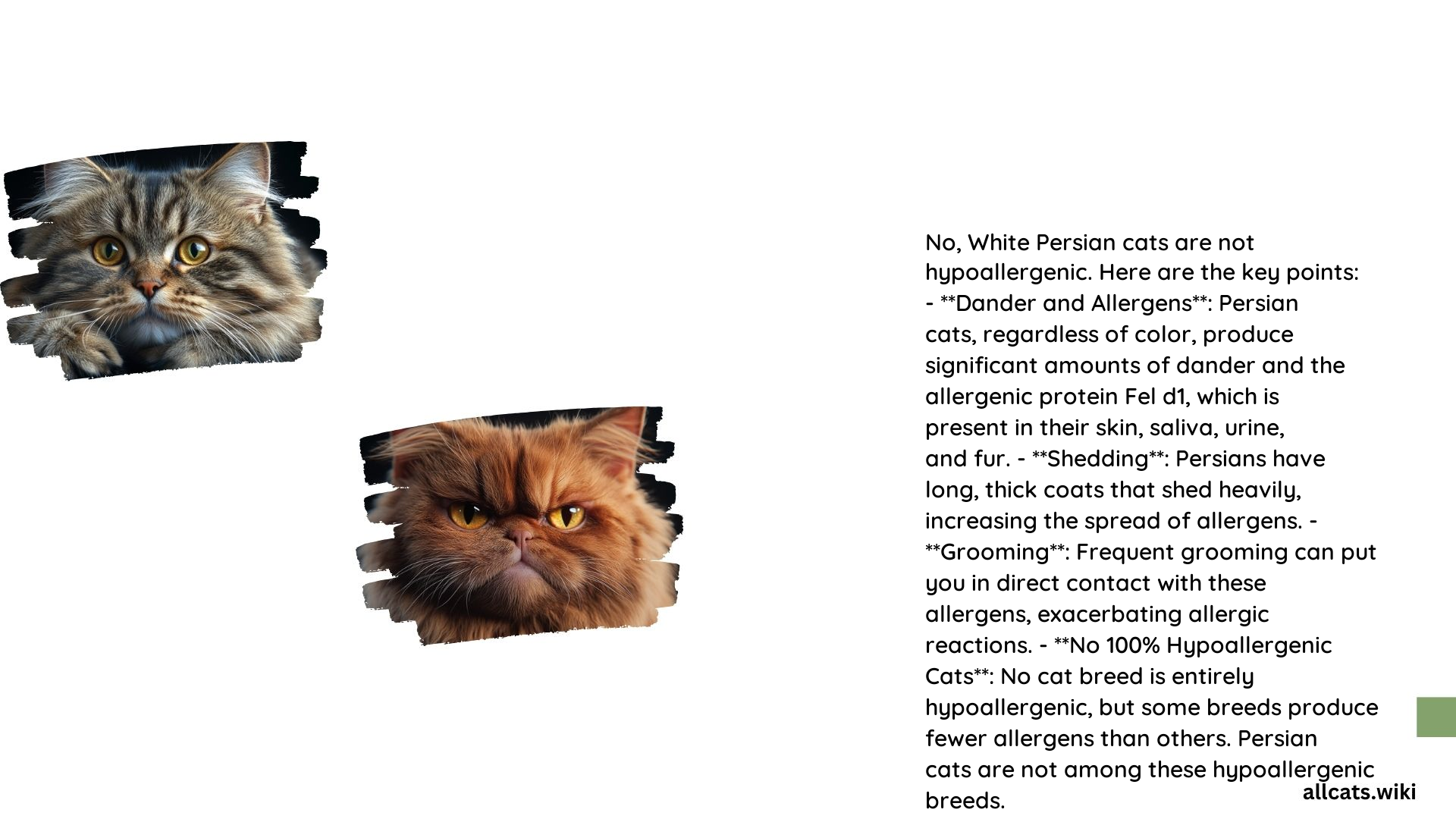Are White Persian Cats Hypoallergenic? A Detailed Exploration
White Persian cats are a popular breed known for their striking appearance and fluffy coats. However, many people wonder if these felines are hypoallergenic, meaning they are less likely to trigger allergic reactions in people. In this comprehensive article, we will explore the factors that determine the hypoallergenicity of white Persian cats and provide practical tips for managing allergies.
Are White Persian Cats Hypoallergenic?
No, white Persian cats are not considered hypoallergenic. Like other Persian cats, they produce a protein called Fel d 1, which is the primary allergen responsible for triggering allergic reactions in humans. This protein is present in the cat’s saliva, skin, and urine, and it becomes airborne when the cat grooms itself, spreading throughout its fur and dander.
Specific Allergens Associated with Persian Cats
The Fel d 1 protein is the main culprit behind allergic reactions to Persian cats, including white ones. This protein is highly allergenic and can cause a range of symptoms, such as sneezing, itching, and watery eyes, in people with cat allergies.
Role of Cat Shedding in Relation to Allergies
Persian cats, including white ones, are known for their long, thick coats, which make them heavy shedders. This shedding is particularly problematic for allergy sufferers because the dander and loose hair can carry the Fel d 1 protein, exacerbating allergic reactions. White Persian cats shed moderately throughout the year, with a significant increase during seasonal changes, such as spring when they shed their winter coats.
What Makes Persian Cats Not Hypoallergenic
The presence of the Fel d 1 protein in the saliva, skin, and other bodily secretions of Persian cats is the primary reason they are not considered hypoallergenic. This protein is highly allergenic and is spread through the cat’s grooming habits, making their fur and dander potent allergen carriers. Additionally, male cats tend to produce more of this allergen than females, and neutered males produce fewer allergens than intact males.
Practical Steps to Reduce Allergic Reactions
To manage allergic reactions to a white Persian cat, several practical steps can be taken:
- Grooming Techniques: Regular grooming can help reduce the amount of loose hair and dander, but it can also increase exposure to allergens if not done carefully.
- Cleaning Routines: Frequent vacuuming with a HEPA-filter vacuum, dusting, and washing fabrics can help reduce the amount of allergens in the home.
- Specific Products: Using hypoallergenic cat shampoos and conditioners can help reduce the amount of Fel d 1 protein on the cat’s coat, and air purifiers can help remove allergens from the air.
- Environmental Adjustments: Creating an allergen-free zone in the home, such as the bedroom, by keeping the cat out of this area can help reduce exposure to allergens.
Statistics and Studies
While there are no specific statistics on the prevalence of cat allergies among white Persian cat owners, it is well-documented that Persian cats are among the breeds that trigger the most severe allergic reactions due to their heavy shedding and high production of Fel d 1 protein.
Recommendations for Managing Cat Allergies
For households with white Persian cats, the following recommendations can help manage cat allergies:
- Dietary Considerations: Some cat foods are marketed to reduce the amount of Fel d 1 protein in the cat’s saliva and skin, but their effectiveness is not universally proven.
- Medication Options: Over-the-counter or prescription medications can help alleviate symptoms of cat allergies, and it is best to consult a healthcare provider for the best options.
- Environmental Adjustments: Regular cleaning, using allergen-reducing products, and maintaining a clean home environment can significantly reduce exposure to allergens.
In conclusion, while white Persian cats are undoubtedly beautiful and captivating, they are not considered hypoallergenic due to their high production of the Fel d 1 allergen. However, with proper management and environmental adjustments, it is possible for people with cat allergies to coexist with a white Persian cat. By understanding the specific factors that contribute to allergies and taking proactive steps, allergy sufferers can enjoy the companionship of these majestic felines.
References
- Purely Pets Insurance: Understanding Cat Allergies
- Hypoallergenic Homes: Wondering if Persian Cats are Hypoallergenic?
- Untamed: Are Persian cats hypoallergenic? Explained in detail
- The Spruce Pets: 14 Hypoallergenic Cat Breeds for People With Allergies

